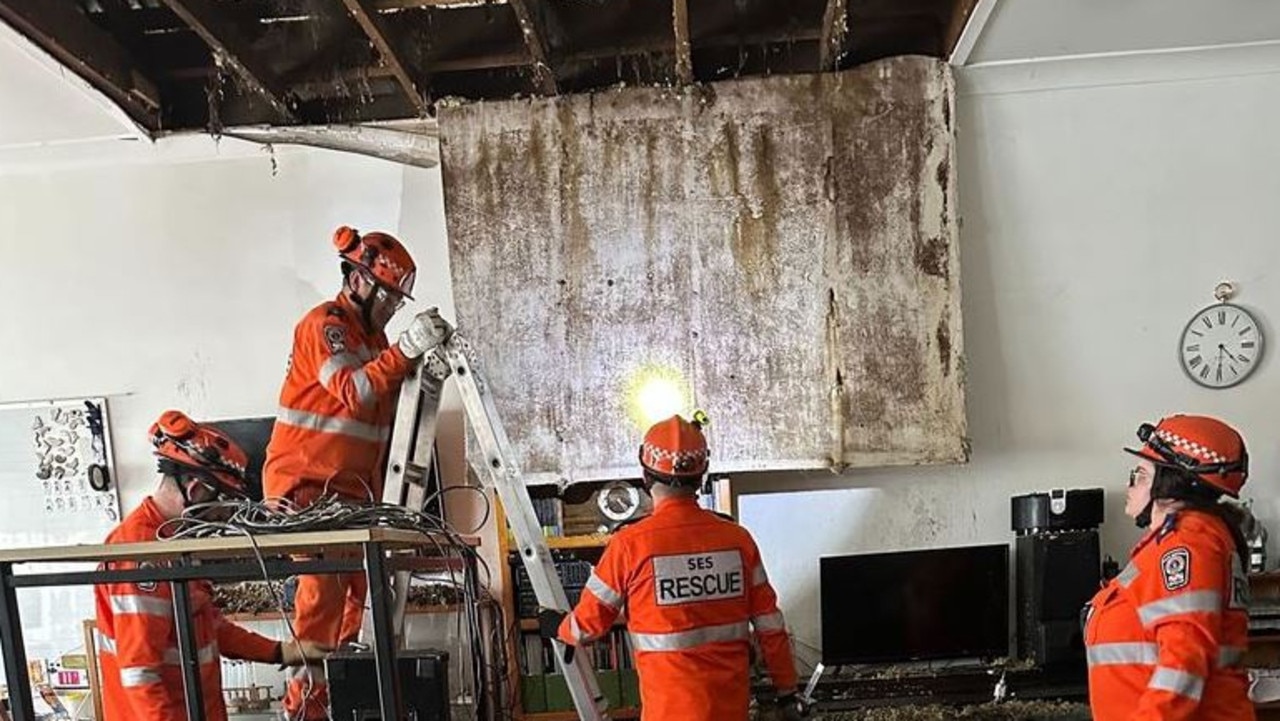The stay-at-home Dad debate: ‘When are you getting a real job?’
IN THE drive to ease the path for working mums, have the scant numbers of stay-at-home fathers been forgotten in the dad debate?

Parenting
Don't miss out on the headlines from Parenting. Followed categories will be added to My News.
ADDRESSING an audience of successful businesswomen, the woman recently named in a list of the most influential women in Australian media knew there was no point telling them about passion, drive or tips for business success.
Instead, Twitter Australia’s managing director Karen Stocks told them something they didn’t know about her: how her husband Danny is the adult in the family who stays home to raise the kids.
And how 10 years on, they’re over not the arrangement, which works a treat, but they are over the stereotypes.
They’re over Danny being asked when he’s going to “get a real job”.
Speaking about building her career, Stocks told the Telstra NSW Business Women’s Awards dinner the ride hadn’t always been easy, “particularly when it comes to balancing a career with family life and the societal expectations of what is considered appropriate parenting”.
“It’s been tough. Not just on me personally, but on my family by extension. Every time we are at a social gathering and my husband is jokingly asked when he’s going to get a real job. Every time my kids are told at school by their “friends” that their mother spends time away because she doesn’t love them.”
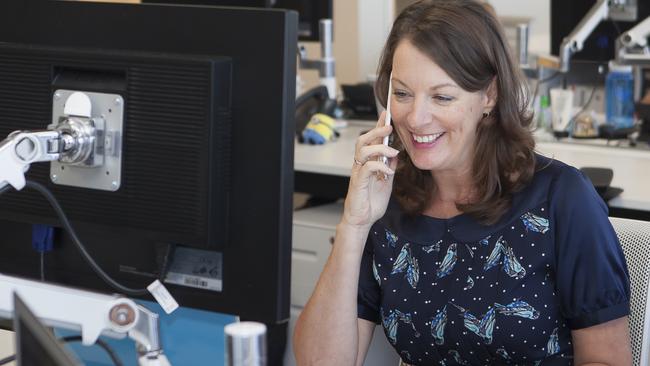
This was no mummy-guilt rant: Stocks was voicing a frustration felt by many about the way stereotypes affect stay-at-home dads.
Sure, paternity leave is there in the HR manuals, but few men use it. And many that do face judgment.
Some grin and bear the “when are you getting a real job?” barbs. Others lie, like the bloke who explained his upcoming absence to colleagues as a six-month surfing sabbatical, believing it was more palatable than fessing up he was going home. To be a parent.
‘WHEN ARE YOU GETTING A REAL JOB?’
Journalist, commentator and author Annabel Crabb researched the issue for her 2014 book The Wife Drought and says stay-at-home dad barbs like getting a real job are a widespread phenomenon.
“There’s a lot of attitudes in Australia that belie our opinion of ourselves as a reasonably egalitarian, equal society,” she says.
Expectations of what we think is normal for women to do and what we think is normal for men to do remain deeply entrenched.
“One of the clues is that we have the term “working mother” whereas a working father is just a dad,” Crabb says.
Last month, the Australian Bureau of Statistics released data showing the number of dads using flexible working arrangements to care for their children has doubled since the mid 1990s.
“Around 30 per cent of dads took advantage of flexible work hours to look after young children (under 12), compared with 16 per cent of dads two decades ago,” said Director of Family and Community Statistics Lisa Conolly.
“The number of dads working from home to care for their children doubled from 7 per cent to 14 per cent, while dads who worked part-time to care for their children rose from 1 per cent to 5 per cent.”
Which looks great on paper. But mums still do most of the child care, with many dads fitting it in around work: 90 per cent of dads with children under 15 are employed (compared with 65 per cent of mums). And 92 per cent of those dads work fulltime (compared to 42 per cent of employed mums). Few men opt for time right out of the paid workforce to become stay-at-home dads.
Stocks says while workplaces are increasingly on board with the concept of paternity leave — Twitter Australia offers 120 days for parental leave, regardless of gender — society is yet to catch up, and on.
“The culture in Australia means we struggle with the concept of men taking paternity leave. And I think men struggle with the concept of taking it. We need to make them feel really comfortable with that,” she says.
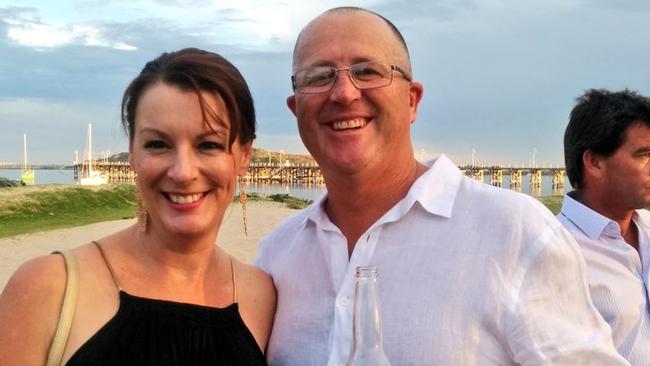
“My husband is an amazingly strong individual and that’s why he has been able to cope. He gets to the stage where he smiles and laughs it off or says: ‘I thought raising kids was real job’.
“The whole point of what I was saying is we have stereotypes for women, but we also have stereotypes for men. For women to break out of those stereotypes we need to allow men to break out of theirs as well.”
“We don’t hear about stay-at-home dads that often. I live and breathe it every day so that’s my reality, but I don’t see it playing out elsewhere.
“I look forward to a time when Danny and I can go somewhere and it’s not even commented on.”
“If we don’t view their role in the early stages of a child like we do a woman we are kind of setting them up from behind to start off with.”
THE REALITY
In 60 per cent of Australian families with children under 15, the father works fulltime and the mother works part-time or not at all. But a surprisingly low 3 per cent do the reverse, Crabb discovered while researching her book.
Anecdotally, men are reluctant to take advantage of the leave provisions they are entitled to.
“There are things that you are allowed to do, that you have the statutory right to do, and there’s what you think will actually fly in your organisation,” says Crabb.
“The HR manual might say male employees may apply for parental leave, but all the research shows of all the men who want to work less or more flexibly, nowhere near all of them actually follow through by asking.
“Men who try to change the way they work face all sorts of largely unspoken barriers, whether it’s fear of being thought unambitious if they work part-time or flexibly, or getting funny looks and comments when they turn up at playgroup or at the school gate.”
Stay-at-home dad Paul Clarke, 35, hasn’t suffered the negative barbs, but was apprehensive about asking his bosses for several months unpaid leave to care for five-month-old son William, while his wife Victoria returned to run her burgeoning business.
“The company I work at has about 20 people and it’s a very friendly, family atmosphere,” he says. “The fears weren’t about them, that was about me,” he says.
“I felt it was a big ask and I didn’t think I had much in terms of a solution to go to them with to cover my absence in the role (he is a facilities manager at a post-production company).”
“There was worry about how it would affect the role coming up. But that was quashed as soon as I spoke to my managers.
“My bosses are both family men. They made it easy. My colleagues were great too. Some of the older dads said they would have loved the chance to do the same thing when their kids were young.”
He’s had scant contact with other stay-at-home dads, but the two he did find had only positive things to say — in fact “they wished they could do it for longer”.
A month in, it’s a steep learning curve, but “so far, so good”, although the first-time dad admits it helps that baby William is “a fairly easygoing bloke”.
“I feel very lucky to be doing this. Don’t get me wrong, this is work, but I didn’t go in expecting it would be easy,” he says.
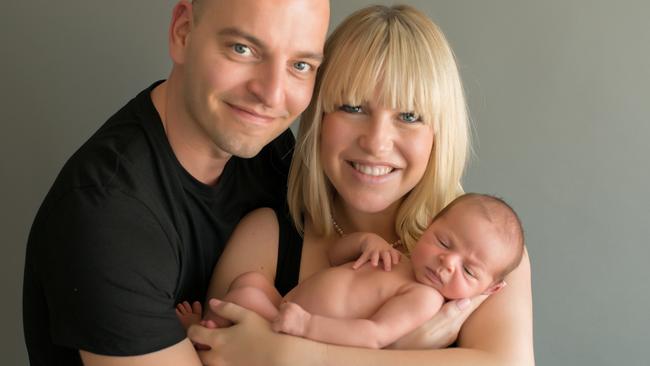
Paul’s fears of asking for time off are common in a society that works hard at making it easier for mums to re-enter the workforce, but hard for men to temporarily exit it.
“We expect that women when they have children will change the way they work, but we don’t have an expectation of that for men at all,” Crabb says.
“For all the arguments about women being less good at asking for pay rises and promotions at work, the thing they are good at is asking for flexibility — and mainly because they are asking on behalf of their families, and men are really bad at asking for that stuff. For some reason we still think that’s a sensible ‘lady’ thing to do.”
She likens the scenario to 50 years ago, when women may have been the only female applicant for a job as they made their steps into the workforce: “it was new and surprising and they were nervous about what people might think”.
“That’s where dads are at, and it’s sad because they miss out on a transient time — raising little kids doesn’t last forever, and it’s a cool thing to be around for.”
THE REACTIONS
The reception to stay-at-home dads appears pretty much split between genders.
“Women will surround them and kiss them to death and say ‘you’re incredible, you’re amazing’, which is sort of weird as well: over-congratulating a guy for something they do themselves,” she says.
“There are stay-at-home dads who laughs about the fact they are constantly offered help from women at the school gate.
“But they’re is also a bit of a tendency for these guys to be abandoned by their former workmates and cohorts in the workforce because the attitude is ‘he’s not working any more’ and that’s quite serious.”
Stocks says women are more “bravo, good on you”, and she’s had plenty of time to think about the real job barbs that come mainly from men.
“When men question about real work I don’t know whether it comes from them wondering ‘I wonder if I could do that ... and would it be OK?’,” she says.

WINDS OF CHANGE
While the numbers of men opting to be stay-at-home dads remains below double figure percentage points, Crabb senses a transition.
“We change by experience. People learn about what’s OK and not OK in old-fashioned ways. In workplaces it’s by looking around at what other people do,” she says.
“I’m hearing anecdotes from large organisations who say that when they make it clear men are entitled to flexible work or leave, one guy will give it a shot, do it, come back to work, and six months later a few other people apply. It’s a cluster pattern if you like.
“I see a greater corporate understanding of two things: more research into what gender equality in organisations actually means for their business models which shows skewed leadership is bad for business; and a better organisational recognition of the fact flexible work can work really well for companies.
“In the old fashioned way once it becomes profitable, blokes become more interested — that’s a bit tongue in cheek obviously but it gives me confidence that we are in a state of transition.”
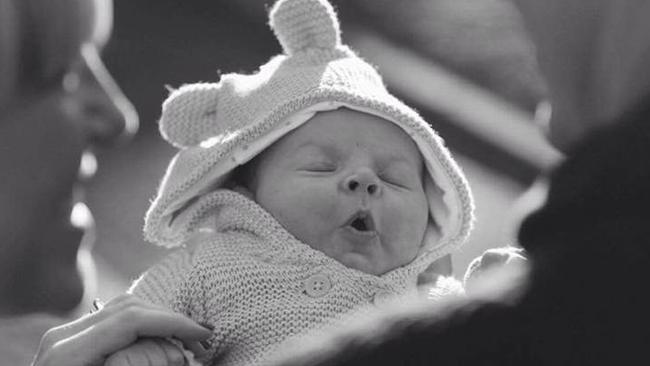
Originally published as The stay-at-home Dad debate: ‘When are you getting a real job?’


